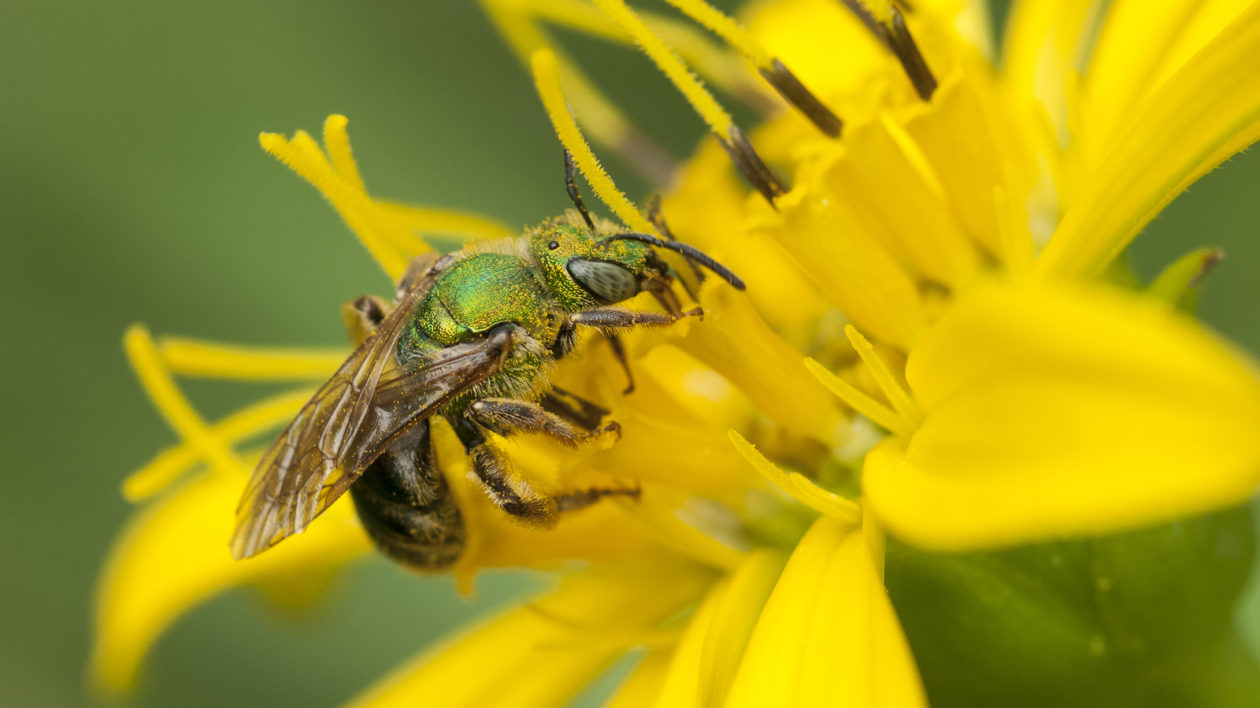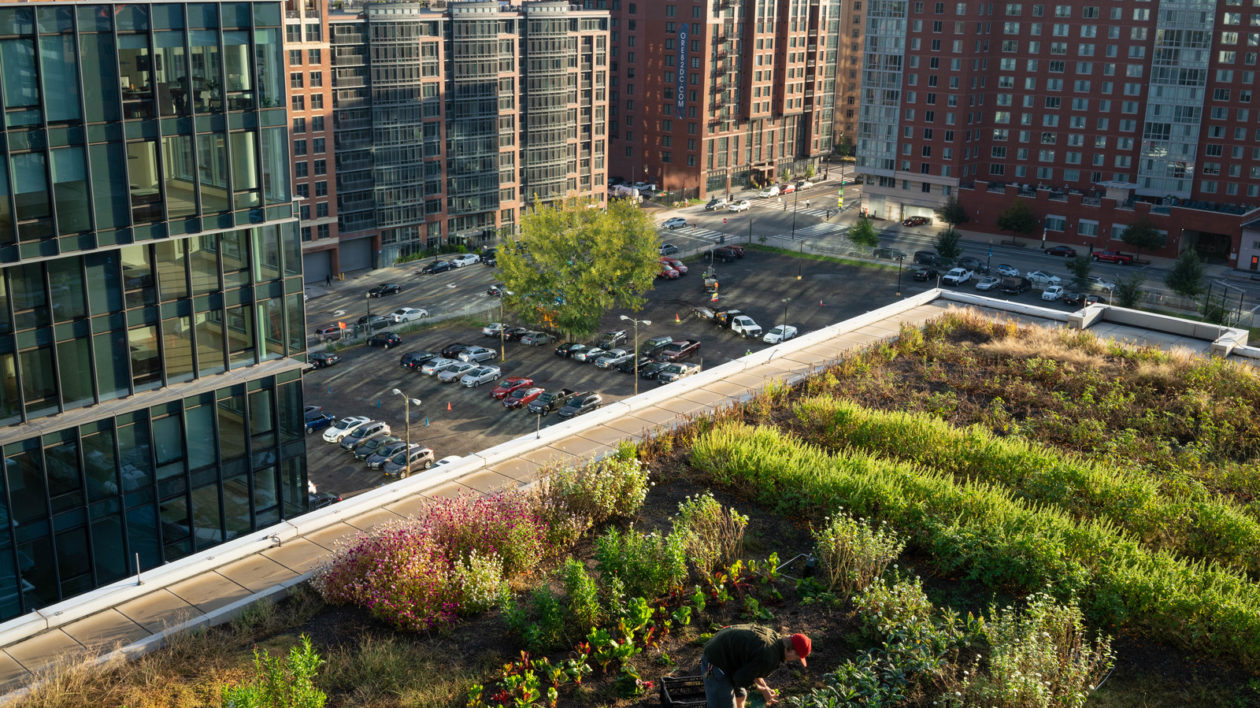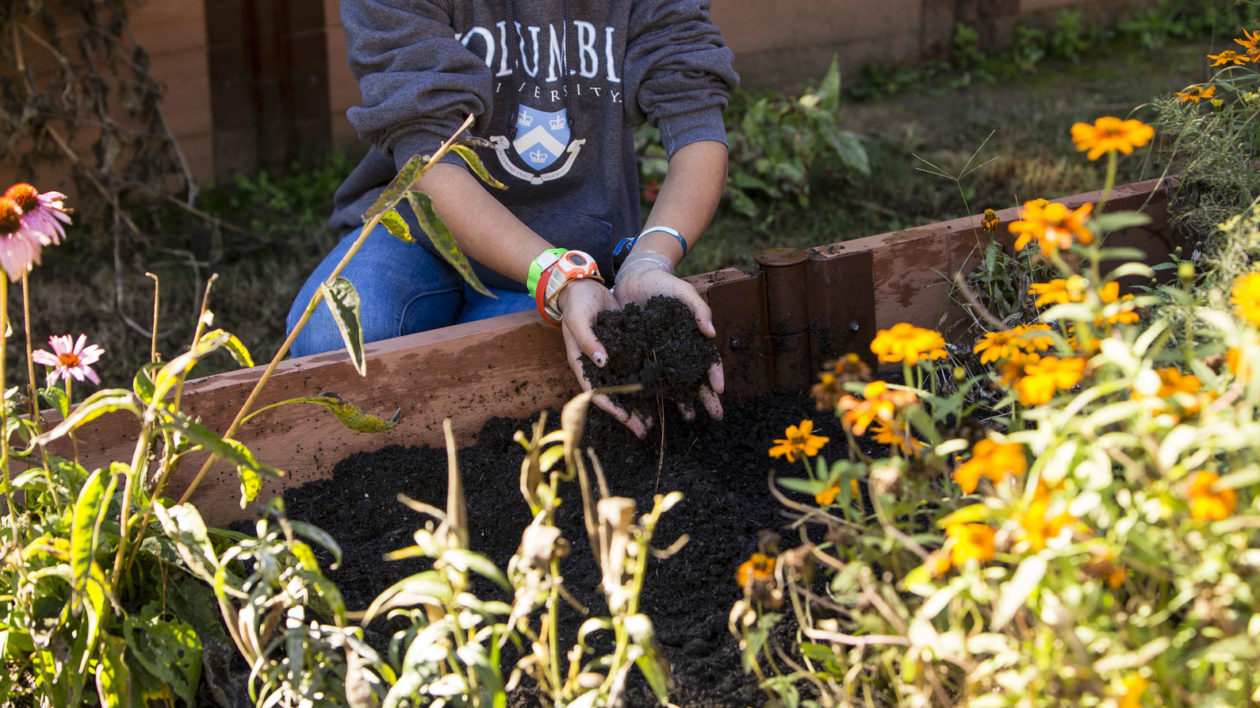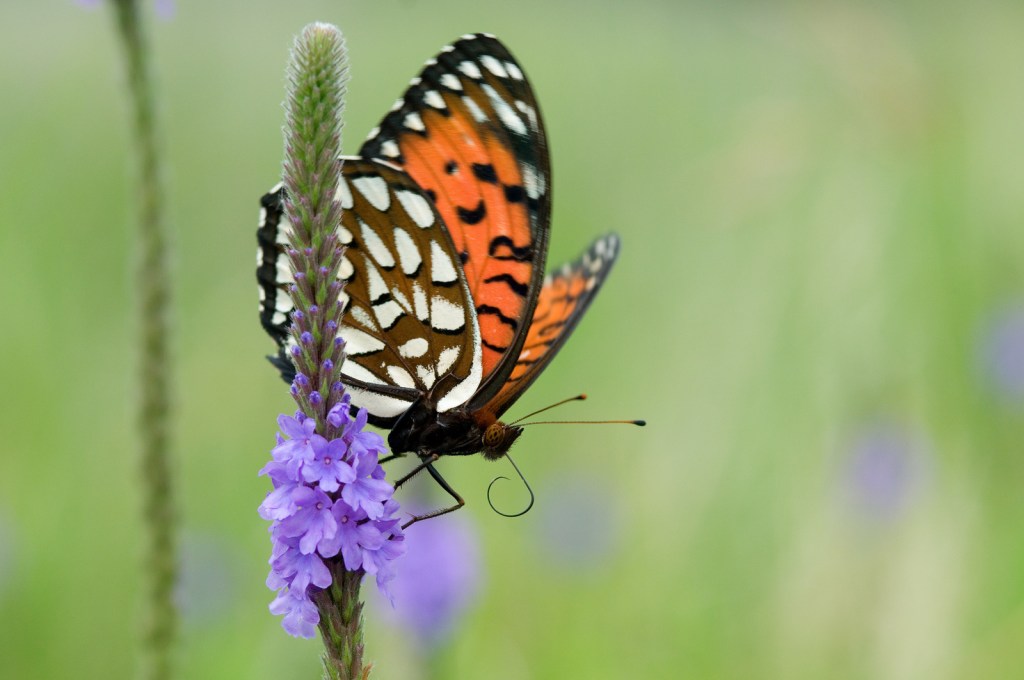Before you buy that rose bush or plant that beautiful lavender this spring, consider this. It’s entirely possible the cultivated roses, while colorful and aromatic, don’t actually have pollen. And some types of lavender, depending on where you live and what variety, might not be shaped for ideal pollinator access.
That means they’re the bee or butterfly equivalent of you sauntering into a 5-star restaurant only to discover it’s out of, well, everything.
But if you’re looking for beautiful flowers that also create pollinator habitat, don’t despair.
A first-of-its-kind study released recently by the journal Nature Ecology and Evolution found that carefully planned gardens and messy yards can be surprisingly beneficial to many critical species of pollinators, from bees and butterflies to the chronically undervalued hoverfly.
Not All Green Space is Equal
Before diving into the details of the new research and what it means for your backyard, here’s a reminder: Pollinators are important. Really important.
The world’s pollinator species – including bees, flies, beetles and butterflies – are required by more than 85 percent of the flowering plants for reproduction. More than 100 crops in the U.S. need or benefit from pollinators, adding up to about $3 billion a year in economic value, according to the Xerces Society for Invertebrate Conservation, an international nonprofit dedicated to conservation of invertebrates.
It would be difficult to overstate the part these littlest of creatures play in our everyday lives from the food we eat to the flowers that bring us joy. It would also be difficult to overstate how much of their future hangs in a balance due to habitat loss, pesticide use, diseases, and climate change.
While some researchers are referring to “insectageddon,” where insect numbers plunge so low it causes ecological collapse, there is hope.
In the paper “A systems approach reveals urban pollinator hotspots and conservation opportunities,” the authors argue that within existing cities, homeowners, neighborhood associations and even community leaders can make strides to help the world’s dwindling pollinator populations.
Lead author Katherine Baldock, a Knowledge Exchange Fellow with the University of Bristol, spent 12 months over two years working with about 25 technicians who surveyed 360 sites in four cities throughout the United Kingdom. They chose nine land uses including community and backyard gardens, cemeteries, roadside ditches, parks and human-created surfaces.
Their goal was to see if one particular type of urban green space was better or worse for pollinator species than another. They found that not all green spaces are created equal in the eyes of pollinators, and while urban nature reserves and parks are good, community vegetable gardens can be even better.

Nothing Replaces Wildlands
While Baldock and her colleagues make the point in their new paper that cities can be useful refuges for pollinator species, they aren’t saying cities are better than open, unaltered hillsides, forests, and meadows.
“If you’re converting fantastic natural habitat into an urban area, it will be a negative thing for insects and biodiversity,” she says. “What we need to do is view this as an opportunity to modify how we manage our urban areas.”
Tina Harrison, a post-doctoral researcher at the University of California-Davis, agreed. Simply because some pollinators are adapted to live in cities, urban areas can’t replace wildlands.
Springtime forest bees, for example, aren’t always well suited for cities, she says. “Garden plants that bloom in the summertime aren’t likely to help all of them because they’re not around all the time,” she says.
On the other hand, cities can be useful boosting some of the rarer bees that find food and refuge later in the season in contrast to the native vegetation.
Harrison cautions against any over-simplification, and suggests people interested in pollinator conservation should work on efforts to conserve wild spaces and encourage smart and restrained use of pesticides.

You Can Help
Whether you live in a subdivision outside of Denver or on the sixth floor of an apartment in the middle of London, you can still make a difference for pollinators — with a little time and thought. Baldock and Harrison offer three ways to improve the lives of pollinators in cities that apply across the globe:
Start a vegetable garden. The health effects of growing your own produce are obvious, as is the benefit of eating one less tomato grown in a hothouse thousands of miles away and shipped to your corner grocery store.
But the boost for pollinators is also significant. “Many crops benefit from pollination and benefit pollinators because they produce good amounts of pollen and nectar,” Baldock says.
For urban dwellers without access to land for their own vegetable garden, consider signing on with a community plot. If there isn’t one in your town, or the ones available are full, petition the city for more.
Choose plants wisely. Simply because a flower looks pretty doesn’t mean it is best suited for pollinators in your area. In a world where flowering plant options are nearly limitless, use resources such as the Xerces Society to find those that will offer your pollinators the most food.
“Be a touch more wild, if that fits in with your aesthetic,” Harrison says. “But I don’t want to send the message if you want bees you can’t have a formal garden, because I don’t think that’s true.”.
Be aware that some plants, such as roses propagated through grafts and pollen-sterile sunflowers, offer little to nothing for pollinators.
Also consider staggering your flowers to include an array of early, mid- and late-season bloomers. That way your garden offers nutrients for as long a period of time as possible to the widest variety of species.

Be a little messy. Do you like to mow every three or four days in the peak of growing season? Maybe consider mowing once a week or every two weeks instead to allow flowers such or clover or dandelions to grow among the grass, Baldock says. And if you have an area that you can allow to grow naturally with native plants, let it be a little wild.
The same advice goes for urban parks, roadside ditches and even city street medians. The longer the grass the more opportunity for growing species that help pollinators. Encourage your local cities to consider planting more flowers in public spaces or converting parkland to native species.
“There are simple measures that could be taken,” she says, “but together they are critical as a source.”




“Be a little messy. Do you like to mow every three or four days in the peak of growing season? Maybe consider mowing once a week or every two weeks instead to allow flowers such or clover or dandelions to grow among the grass, Baldock says. And if you have an area that you can allow to grow naturally with native plants, let it be a little wild.”
I’d go a step further and highly recommend converting some of your managed lawn grass/turf to a native ecosystem, perhaps a prairie or rain garden for example. It doesn’t have to be a huge area either, unless you have that luxury. I’ve created both types of native gardens with numerous species of natives like Cardinal Flower, Anise-Scented Goldenrod, Smooth Aster, Prairie Dock, Cream False Indigo, Queen of the Prairie, Royal Catchfly, Compass Plant, Little Blue-Stem, Giant Ironweed, Common Milkweed etc., with fabulous results. Over the course of a several years I’ve seen a solid population increase of insects, pollinators, bees, birds, wasps, butterflies etc. Some plants that have historically been considered weedy natives make some of the best pollinator magnets. I’ve observed well over a two dozen separate bee, wasp and fly species on a fall blooming Eupatorium perfoliatum(Common Boneset). Plants like Common Boneset, which can be quite vigorous if left to themselves, are kept in check by numerous other natives that compete with them and add more biodiversity. I also thin out any highly successful species accordingly by pulling plants or removing seed heads to keep populations balanced.
https://www.cbc.ca/news/canada/calgary/calgary-bee-boulevard-discovery-endangered-1.5106593
I’ve deliberately left my acre pretty wild, I have lots of wild mint, sage, chuparosa, and another similar plant on my property. It makes for good hummingbird watching and lots and lots of bees and a few different types of butterflies & one time even a giant ceanothus silk moth (absolutely gorgeous if you’ve never been lucky enough to see one) ! Three different types of woodpeckers have made homes in my century plants, and I have phoebes, a blue jay, a little finch, and a gnatcatcher that follow me around while I’m doing yard work.
I raised over 18,000 pollen free sunflowers per year for cut flowers for 7 years. There were abundant bees of many types feeding on the abundant nectar.
Check out this website to see what’s best to plant to host butterfly and moth caterpillars. It will also bring birds to your yard, since they like to eat the caterpillars. That helps keep nature in balance. See: https://nwf.org/NativePlantFinder/ and put in your zip code.
You can intermix vegetables with native plants. I live in Hill country in Texas, so have to do most of my planting in pots on deck. In one big pot I have an organic, heirloom tomato with native plants. I do the same with lettuce. Native salvias and other plants grow “naturally” around my house as they reseed very easily or are perennials. Even in small farms, the movements is back to no tilling, just intermixing crops and forbs. This saves the nutrients in the soil. It is also being done in orchards – fruit trees among othes and shrubs.
I would suggest looking for the plants you see in your area that are attracting pollinators to use in your own yard and garden. I was amazed to see how one tiny milkweed that had just begun to have flowers, attracted Monarch butterflies to my yard recently.
Great point, Paul! Of all possible options, milkweed plants are especially vital right now thanks to the terrible situation that Monarchs are in. The plants provide food for both stages of their life and the over-use of pesticides and conversion to mono crops in many large farms has decimated them. There is a great website https://www.growmilkweedplants.com that I recommend to everyone interested in helping monarchs (and other pollinators). The site has a state-by-state map that helps you identify which milkweed species will thrive in your area and there is ample advice on cultivating healthy plants. I’ve got a few hundred seeds germinating in my fridge and will be distributing them to friends and co-workers in re-used flower pots (from my recently installed pollinator flower garden) so they can start re-populating the species in my area.
E.O.Wilson says that we can provide “islands” for wildlife and they can be large, medium or small within urban areas. My yard is an example of that. I do not need videos or other forms of entertainment. I can sit outside and be entertained by the sites and sounds of wildlife. And then I can walk up to the SMMNRA and hike and wee even more!
Bees love our spirea. Nice perennial in Connecticut!
Thank you for sharing this well written article. We all need to keep sharing the word and to encourage our neighbors and municipalities to adopt more life sustaining practices and policies. Natural environments allow us to enjoy more interactions with nature in our own backyards, and for children to become aware of the science of things on a daily basis. The healthy practices for our landscape are not only healthy practices for birds and butterflies but, children and pets.
See https://uflorida-my.sharepoint.com/:p:/g/personal/ktgioeli_ufl_edu/EexBhaYCRztIvMoy8KIuaoEBQxzMqx-_9CxfY5VN-3gD-A?e=foibAp. Native plants are the best for pollinators and wildlife. They bloom and/or fruit when our wildlife need them the most. When put in the right place, they need little to no fertilizer and can take the inundation of insects without dying. Insects are an important part of the food web and we need to get people to stop using insecticides or even soaps and oils. Even Neem oil, which is a natural product is very dangerous to bees. It is a growth inhibitor and if sprayed on plants when the flowers are open, it will get on the pollen and be brought back to beehive where it will do harm to the bee’s larvae. We also need to teach more about native ‘weeds’. Call them wildflowers instead and you’ll find out how many of them are host plants for both butterflies and beautiful moth caterpillars, which are important foods for birds; especially baby birds.
It would be helpful, in EVERY article about how important SOME pollen is for the pollinators (those who carry pollen), to ALSO include the facts about pollen and how it affects those suffering from pollen allergies.
My understanding is that the major difference in pollens, is that plants spread their pollen in one of two ways:
1. by the wind BLOWING their pollen around (some but not all trees, and also grasses)
2. by pollinators (mostly insects from bees to beetles) who CARRY the pollen on their bodies to other plants
Windblown pollen is lighter and dispersable by mere wind.
Carried pollen is heavier and must be picked up by something, and then MANUALLY CARRIED.
In general then, the pollinators are only interested in HEAVY POLLEN, whether intentionally gathering it, or incidentally, when it sticks to them whether or not they want it to – again, this is the pollen which is NOT blown around by wind.
Wind goes everywhere, into open windows, into the air we breathe, and therefore, into our noses, into our eyes etc. This lighter weight, WINDBLOWN pollen is the source of pollen causing ALLERGIES.
So unless a person took the pollen from the plant which has HEAVY POLLEN, put it on their fingers and then rubbed that around their eyes and nose, they would not be subjected to pollen from those many many plants who DEPEND ON POLLINATORS to spread their pollen, as opposed to plants like many trees and also grasses who depend on the WIND to spread pollen. HUGE DIFFERENCE!
Therefore, whenever we talk about pollinators needing pollen, if this huge difference is not pointed out, then those who are allergy sufferers, may rightly think that “too bad about pollinators needing pollen because I am suffering greatly from it.” When in reality, there are two basic types: one that affects humans through the air and one that does not.
In other words, the kind of pollen needed for pollinators is not the kind that affects human allergy sufferers.
Bumblebees for example, use “buzz pollination”, a process whereby the bumblebee vibrates the tomato blossom in order to get the pollen to come off onto its body. In other words, the pollen has not already been blown off by wind.
I hope the pollen experts weigh in on this important distinction and offer their thoughts or will express it more clearly. I also welcome any corrections the experts may have.
The movement of cities to make water unaffordable for home owners, is killing our options for many helpful gardens! Maybe some one needs to realize we are not criminals if we plant our yards instead of turning them into patios. Wild life needs the access, not to mention improved air quality, and beauty that results. So sad. 50 gallons per day is just plain silly. If we can move oil through pipelines surely we can share water from all the flooded areas with the areas that need it
I wish this has included more of a push for native plants in gardens. Veg gardens are nice, but most of the plants in a veg garden are not native, and while native bees (et al) can make use of them, they still would do much better if we put in native plants. It’s comparable to what you state in the article: cities can help, but preserving natural areas is better.